The 2017 Ig Nobel Awards: Cats Flow Like Liquids and Didgeridoos Stop Snoring
Seriously Silly
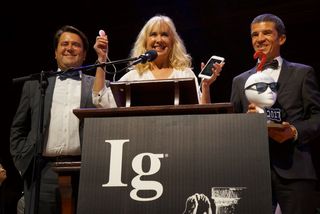
Science, it turns out, can sound silly. That's where the Ig Nobel Prizes come in: The awards honor research that first makes people laugh and then makes them think. Here's a look at the seriously fun scientific research that was honored in the 27th First Annual Ig Nobel Prize Ceremony at Harvard University's Sanders Theater.
Why crocs may be risky for gamblers
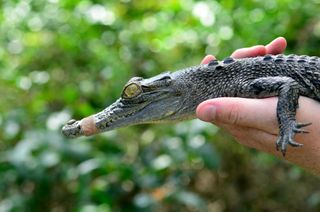
What do crocodiles and Poker have in common? Well, not much, except the fact that a person who holds a little croc may be more likely to shell out higher bets. Of course, there are some nuances. For the research, detailed in the Journal of Gambling Studies in 2010, the researchers looked at 62 men and 41 women, some of whom held a saltwater crocodile in Queensland before playing an electronic gaming machine. Those who were at-risk gamblers and few "negative emotions" placed higher bets on average after having held the crocodile than those who didn't hold a crocodile. The reptilian research, entitled "Never Smile at a Crocodile…," won the science duo the Ig Nobel Economics Prize.
Benefits of Didgeridoo playing

Have a partner who snores? A little didgeridoo playing may be in order. Really. A team of scientists wanted to see if playing this wind instrument developed by indigenous Australians could be used to treat a type of obstructive sleep apnea syndrome — a health disorder in which a person repeatedly stops and then starts breathing again while asleep. One of the symptoms is loud snoring. Their study showed success at least for those with a moderate form of the disorder. And for their musical study, which was published online in the British Medical Journal in 2005, they won the Peace Prize.
Rheology of Cats
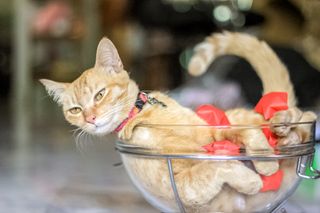
This year's physics prize went to Marc-Antoine Fardin, of the Laboratory of Statistical Physics in Lyons, France. The winning research, entitled "Can a Cat Be Both a Solid and a Liquid," was published in "On the Rheology of Cats" in the Rheology Bulletin. For the study, Fardin explored how cats "flow" like liquids — think about Fluffy jumping into an oddly shaped container (that is, of course, seemingly too small), only to conform to its shape, a property of a liquid. Fardin said he got the idea from something he read online about 15 proofs that cats are liquids. He used the so-called Deborah's number to get to the bottom of the question. The number is based on the idea that, given enough time, everything will flow…even cats!
Why old men have big ears

The Anatomy Prize went to James Heathcote for his ear-y research. Published in the British Medical Journal in 1995, the research focused on answering the question: Why do old men have big ears? Hmmm … are they better to hear you with? Heathcote and three other general practitioners got to work measuring ears; in all, they measured the left ears of 206 patients, ranging in age from 30 to 93. Indeed, ears got bigger the older a man was, with their results showing the ear grew about 22 millimeters a year. The paper didn't answer why this happened, only that even as the rest of the body seems to stop growing, a person's ears continue to blossom.
Genital reversal in cave insects
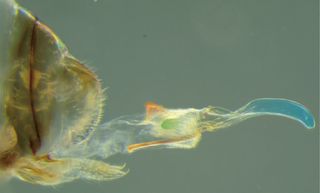
The genitals of a cave insect snagged the Biology Prize. The team of researchers discovered the first case of genital reversal — in which the male sports a vagina and the female a penis — in four species in the Neotrogla genus of cave insects from Brazil. The females, they found, were equipped with so-called gynomsomes (shown here), penis-like genitals made of muscles, ducts, membranes and spikes. The males, in contrast, had vagina-like phallosomes. The researchers suggested possible reasons for the reversal, including one idea that the structures allowed females to mate more often for long periods of time. Their research was published in 2014 in the journal Current Biology.
How to spill a cup of coffee

Any regular coffee drinker knows, it's easy to spill a cup of joe, especially on one's way to work. What if you had to walk backward with that smooth morning coffee? Enter Jiwon Han, a student at the University of Virginia. He snatched the Fluid Dynamics Prize "for studying the dynamics of liquid-sloshing, to learn what happens when a person walks backwards while carrying a cup of coffee," according to a statement. Han was a high-school student when he completed the research and published it in the journal Achievements in the Life Sciences in 2016.
Vampire bats switch to human blood
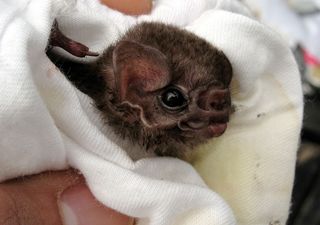
The Nutrition Prize honored blood-suckers. A trio of researchers described the first report of human blood in the diet of the hairy-legged vampire bat (Diphylla ecaudata) in the journal Acta Chiropterologica in 2016. By analyzing the prey of this vampire bat in the Caatinga dry forests of northeastern Brazil, the researchers found both chicken and human blood in the mix. Their finding suggested the bats were consuming such novel "prey" (human blood) because there weren't enough of the usual suspects around: wild birds in the forest.
Your brain on cheese

Some people can't live without cheese, while others, well, it disgusts them. And now there's a scientific basis for that "ewwww" feeling. A team of scientists used brain scanning to measure the extent to which some people feel a disgust for cheese. Their research, published in 2016 in the journal Frontiers in Human Neuroscience, revealed certain reward areas of the brain called the internal and external globus pallidus and the substantia nigra belonging to the basal ganglia were more active in those who hated eating cheese than those who liked cheese. To trigger the brain activation, the researchers used cheese odors and pictures.
Is that me or my twin?

Really?! Could identical twins really have a hard time telling themselves apart? Turns out, the answer, according to research published in 2015 in PLOS ONE. For the study, the researchers had male and female identical twins each look at a series of photos, including photos of the faces (minus any hair, etc.) of themselves, their twin and a friend; these faces were shown both upright and inverted. Most people are better at recognizing their own faces than others', but this wasn't the case for the identical twins, who were just as good at recognizing their twin's face as their own.
How do fetuses like their tunes?

The Obstetrics Ig Nobel went to researchers who showed for "that a developing fetus responds more strongly to music that is played electromechanically inside the mother's vagina than to music that is played electromechanically on the mother's belly."
Sign up for the Live Science daily newsletter now
Get the world’s most fascinating discoveries delivered straight to your inbox.

Jeanna served as editor-in-chief of Live Science. Previously, she was an assistant editor at Scholastic's Science World magazine. Jeanna has an English degree from Salisbury University, a master's degree in biogeochemistry and environmental sciences from the University of Maryland, and a graduate science journalism degree from New York University. She has worked as a biologist in Florida, where she monitored wetlands and did field surveys for endangered species. She also received an ocean sciences journalism fellowship from Woods Hole Oceanographic Institution.
